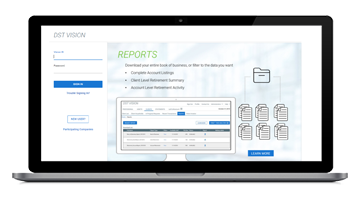What investors need to know about market volatility and the VIX
A widely watched measure of market volatility surged to its highest level since October 2020,¹ bringing a close to what had been an extended period of a stable trading environment.

Not all indexes are created equal—in a world full of them, it’s only natural that some will draw more investor attention than others. But it’s likely that few have the same effect on investors as the Cboe Volatility Index (VIX)—widely known as the fear gauge or fear index.
Volatility and the VIX explained
In an investing context, volatility is the frequency and magnitude of price movements. While most investors probably associate volatility with painful market declines, in reality, it’s a two-sided coin, as it’s a function of price gains as well. The more dramatic the market’s price swings, the higher the level of volatility. Price changes occurring within the span of a trading day reflect what’s known as intraday volatility.
The VIX is a barometer of investors’ expectations as to how much market uncertainty lies ahead over the next 30 days as measured by fluctuations in prices for options on the S&P 500 Index.
Options are contracts offering the buyer the opportunity to buy or sell stock—depending on whether the contract is a call option or a put option—at a stated price within a specific time frame.
When investors expect that uncertainty about the market’s direction will decrease, they’re less inclined to pay a premium for the potential protection that a stock option may provide against a future loss from a market decline. On the flip side, when expectations of uncertainty climb, option prices tend to rise, as does the VIX. Typically, a decline in stock prices is accompanied by a rise in the VIX. Fluctuations in the VIX’s level throughout a trading day reflect aggregate changes in option prices. As with other market indexes, the VIX’s daily closing price is calculated after the closing bell.
Volatility is rising, but it’s still far from a record high
What volatility and the VIX may mean for investors
Market volatility can test any investor’s fortitude, and many respond by trading in and out of the market amid its gyrations—with varying degrees of success. The challenges of such an approach are easily observable during periods of turbulence. For instance, in 2020, just before the S&P 500 Index hit a low point on March 23, it may have seemed to many investors to be a good time to sell, as the market then appeared as if it could go nowhere but down. As it turned out, the index surged after reaching that low and had tacked on significant gains since then.
It’s important for investors to understand that market volatility comes and goes—it’s a feature of functioning markets. The recent instability may ultimately prove to be a mere bump in the road for investors who stay in the market for the long haul and incrementally build up their invested savings through regular contributions to a 401(k) plan or another type of retirement account.
A period of heightened uncertainty like the one we’re going through now can be an opportune time to meet with a trusted financial professional to review financial goals and follow a plan that helps you make the most of what may continue to be a challenging situation.
1 Bloomberg, as of 8/6/24.
Important disclosures
Important disclosures
The views presented are those of the author(s) and are subject to change. No forecasts are guaranteed. This commentary is provided for informational purposes only and is not an endorsement of any security, mutual fund, sector, or index. Past performance does not guarantee future results.
The S&P 500 Index tracks the performance of 500 of the largest publicly traded companies in the United States. The Cboe Volatility Index (VIX) tracks the performance of the market’s real-time expectations of volatility over the coming 30 days. It is not possible to invest directly in an index.
MF3773687





